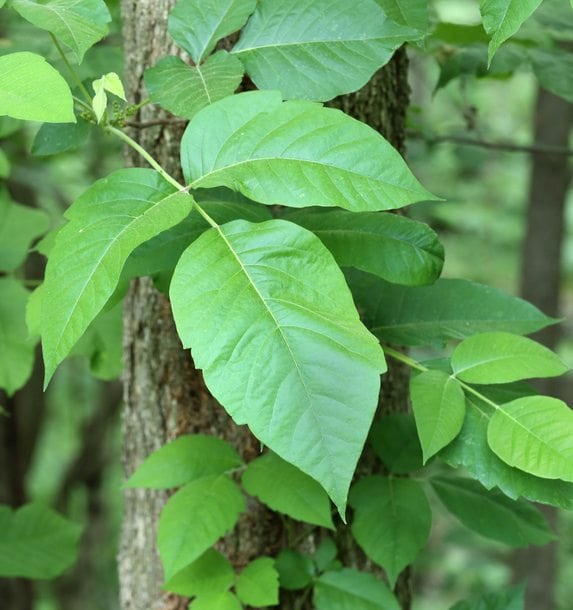If you are among those allergic to poison ivy (and 70-90 percent of us are), avoiding contact with the plant is the best way to prevent infecting yourself with its hallmark itchy rash.
Knowing what the plant looks like is a start.
According to the Centers for Disease Control and Prevention, there are two poison ivy variations:
- Eastern poison ivy is typically a hairy, ropelike vine with three shiny green (or red in the fall) leaves budding from one small stem. It is often found on the ground, or as a climbing vine.
- Western poison ivy is typically a low shrub with three leaves that does not form a climbing vine
- May have yellow or green flowers and white to green-yellow or amber berries
With its prominent three-leaf formation, it has given rise to the age-old rhyme “Leaves of three, leave them be,” a helpful reminder to all who venture into the great outdoors.
Unfortunately, it’s can be difficult to avoid poison ivy, and urgent care treatment may be required, according to Dr. Jeff Finkelstein from the Hartford HealthCare/GoHealth Urgent Care centers.
https://soundcloud.com/hartford-healthcare/treating-poison-ivy
“If it’s really isolated, a couple patches on your arms or legs, we use topical steroids,” Dr. Finkelstein said in a podcast with WTIC’s Ray Dunaway. “But once it gets diffuse, the only thing that works is oral prednisone, or steroids.”
Steroids, of course, require you see a doctor for a diagnosis prior to the issuing of a prescription. So see a doctor if you need treatment for poison ivy!
Need immediate relief from poison ivy? Visit your local Hartford HealthCare/GoHealth Urgent Care Center.


